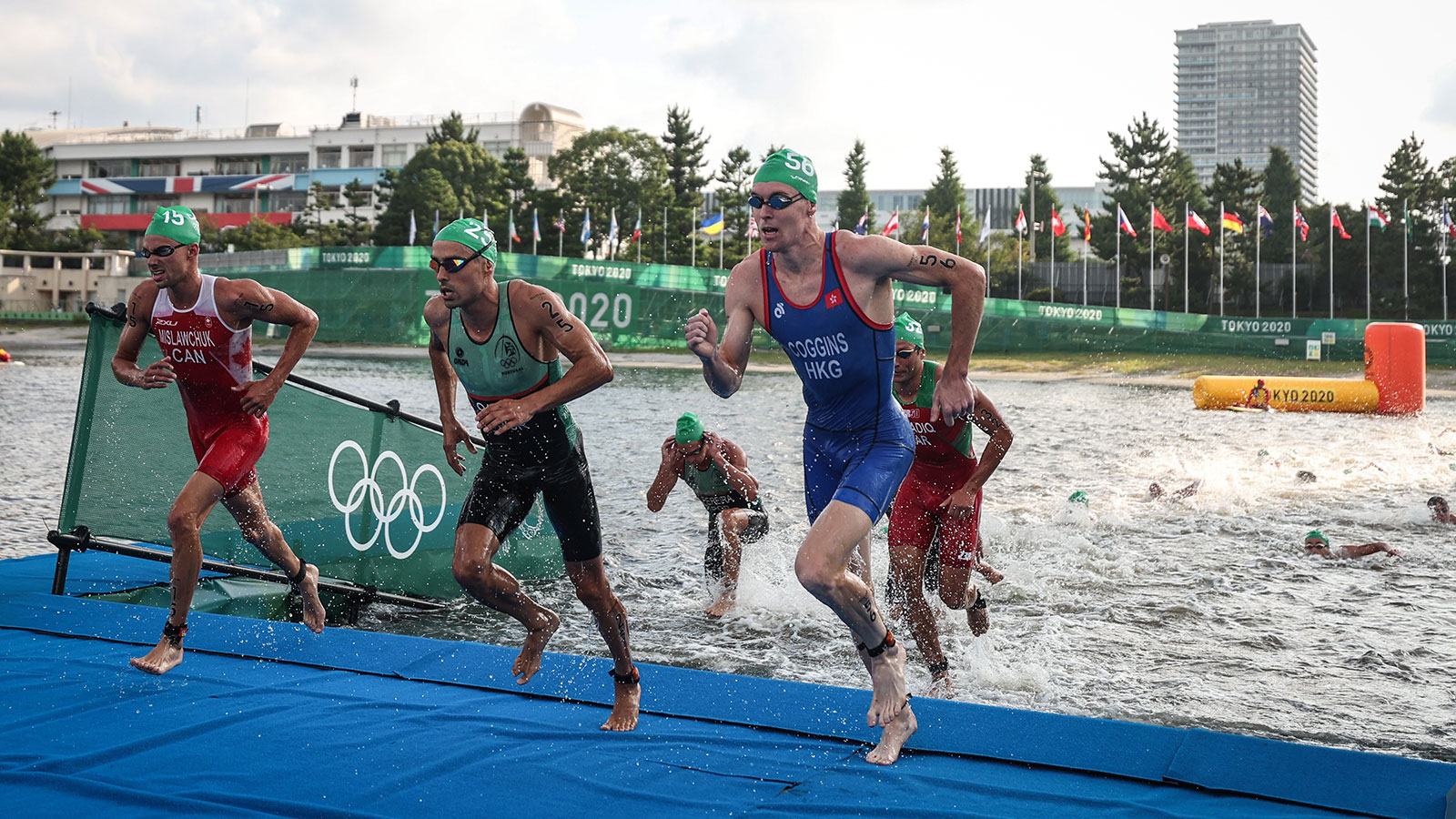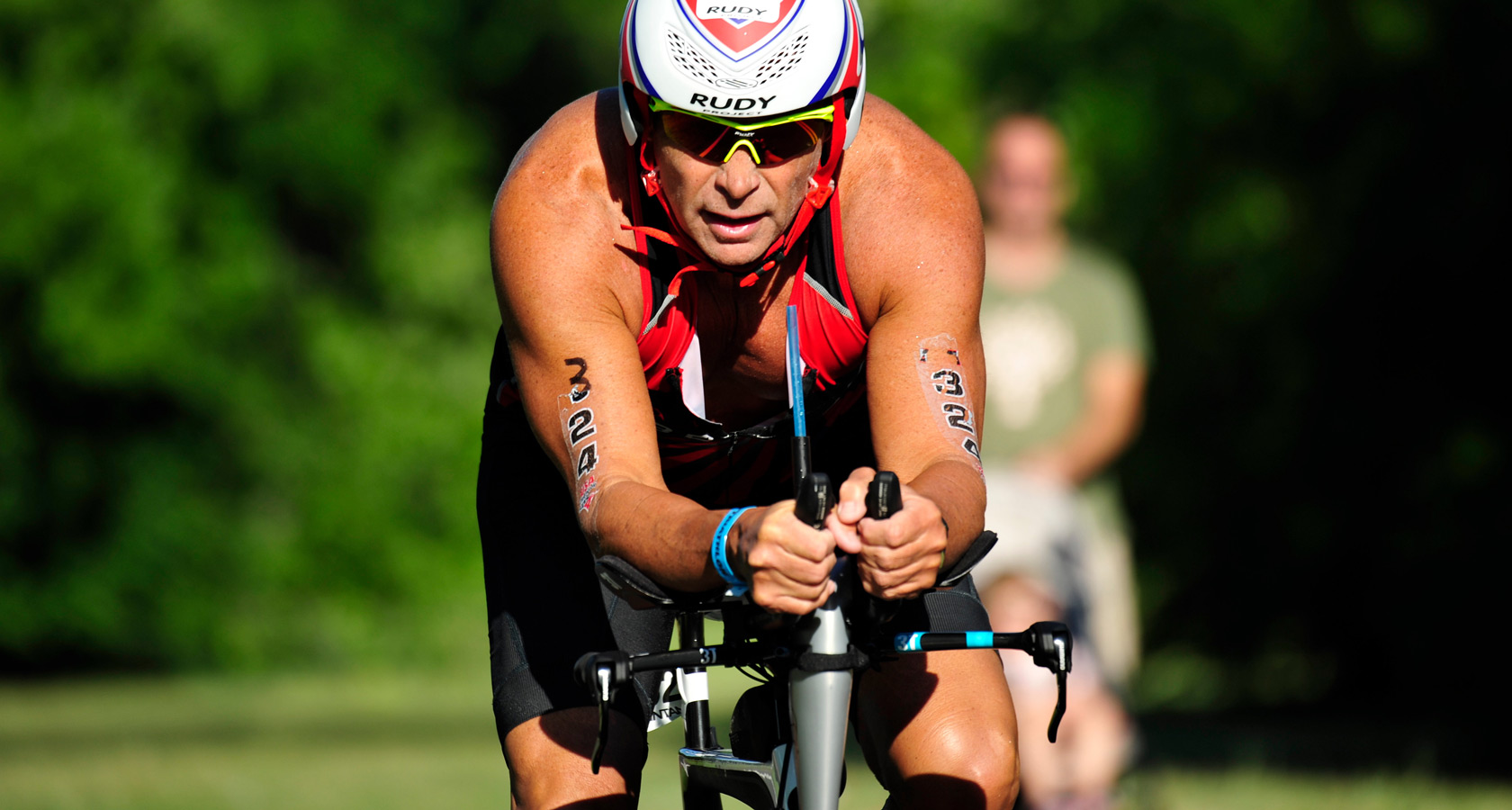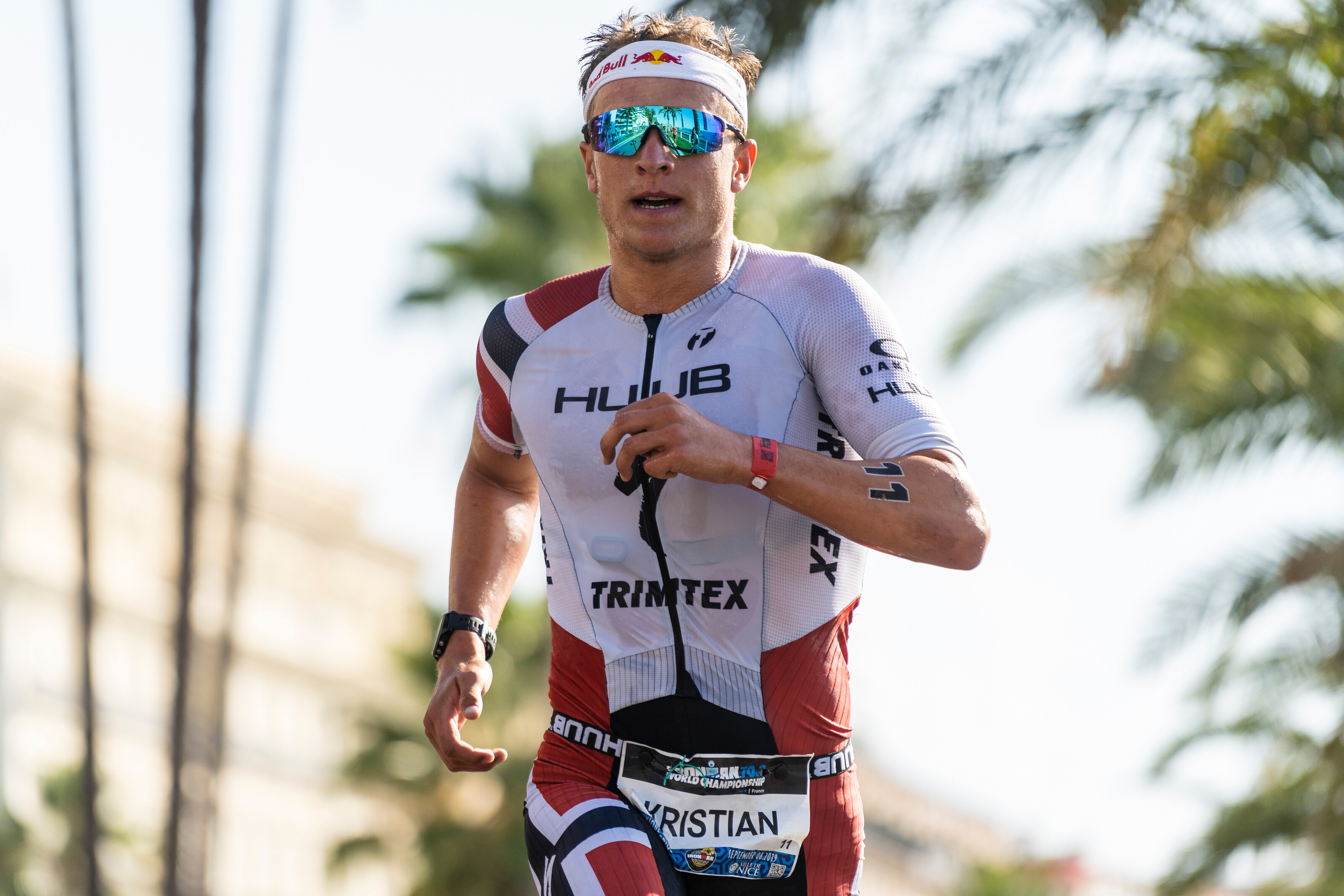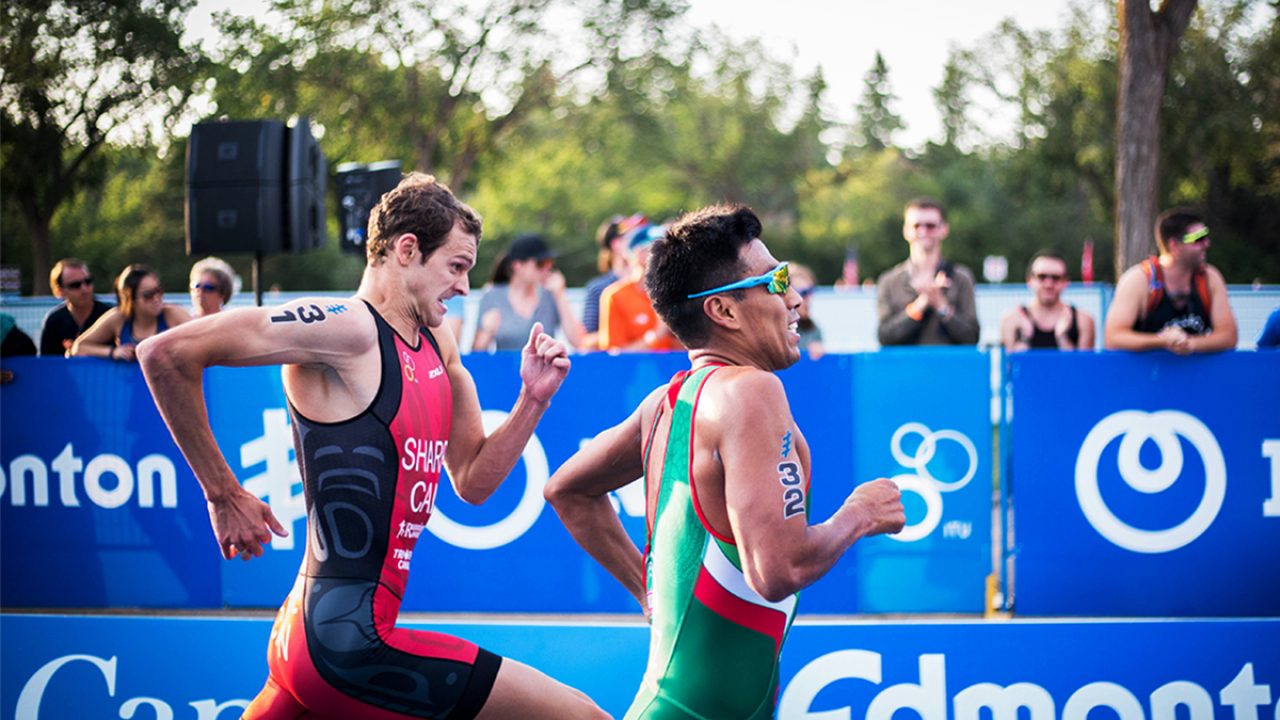

Featured
What Is A Short Chute In Triathlon
Published: August 12, 2023
Discover what a short chute in triathlon is and how it can be featured in your next race. Find out how this technique can give you a competitive edge.
Introduction
Triathlon is a demanding and exhilarating sport that combines swimming, cycling, and running into a single race. Athletes push themselves to the limit, aiming to complete each leg of the race as quickly as possible. To make the triathlon even more challenging, organizers have introduced the concept of a short chute. But what exactly is a short chute in triathlon?
A short chute is a designated area on the race course where athletes can take a shorter route, bypassing a section of the course. It is intended to provide a strategic advantage to athletes who choose to utilize it. However, the use of short chutes in triathlons has sparked both excitement and controversy within the triathlon community.
The concept of the short chute is inspired by similar strategies used in other sports, such as NASCAR and Formula 1 racing, where drivers can take a pitstop to gain a competitive edge. In triathlon, the goal is to provide athletes with an opportunity to strategize and potentially gain a time advantage by taking a shorter route.
The implementation of the short chute adds an element of excitement and unpredictability to the race. Athletes must not only possess exceptional physical endurance but also employ strategic thinking to determine the most advantageous moments to use the short chute. It introduces a fascinating dynamic to the race, as athletes evaluate when and how to take the shorter route.
While the concept of the short chute introduces new strategic possibilities in triathlon, it also raises questions and challenges the traditional norms of the sport. Some argue that it disrupts the integrity of the race, as it allows athletes to bypass a portion of the course that others must complete. This controversy has led to heated debates among athletes, coaches, and race organizers.
In the following sections, we will delve deeper into the definition of a short chute, its purpose and implementation, the rules and guidelines surrounding its usage, and the advantages and disadvantages associated with it. We will also explore notable examples of short chute utilization in triathlon, providing a comprehensive understanding of this fascinating addition to the sport.
Definition of a Short Chute in Triathlon
A short chute in triathlon refers to a designated area on the race course where athletes can opt to take a shorter route, bypassing a section of the course. It is typically marked by cones or signage and is strategically placed to provide athletes with a time-saving opportunity.
The length and location of the short chute can vary from race to race but are typically positioned in key sections of the course, such as sharp turns, steep inclines, or areas with poor road conditions. The purpose of the short chute is to offer athletes an alternative route that may be faster or more advantageous compared to the standard course.
The short chute is an optional route, and it is up to each athlete to decide whether to utilize it during the race. Athletes must make split-second decisions on when and how to use the short chute based on their strategy, fitness level, and course conditions. This element adds an extra layer of complexity to the race, as athletes must assess risk versus reward and factor in their individual strengths and weaknesses.
It is important to note that the short chute is a relatively new concept in triathlon and is not implemented in all races. The decision to incorporate short chutes lies with the race organizers, considering factors such as the race format, course layout, and the overall vision for the event.
To maintain fairness and consistency, race organizers often set specific guidelines and rules for short chute usage. These guidelines may include restrictions on when the short chute can be used, the distance it cuts off from the original course, and penalties for improper utilization.
In the next sections, we will explore the purpose and implementation of short chutes, the rules and guidelines surrounding their usage, as well as the advantages and disadvantages associated with this strategic addition to triathlon races.
Purpose and Implementation of Short Chute
The purpose of incorporating short chutes into triathlon races is multifaceted. Firstly, it adds an element of strategy to the race, allowing athletes to make tactical decisions and potentially gain a competitive advantage over their opponents. By offering a shorter route, the short chute presents athletes with an opportunity to save precious time and energy.
The implementation of short chutes can also enhance the spectator experience. The strategic utilization of short chutes creates thrilling moments of suspense and unpredictability as athletes maneuver through the course. Spectators can cheer and marvel at the strategic prowess of the athletes who choose when to activate the shortcut.
In addition to strategic considerations, the implementation of short chutes can address logistical challenges. Triathlon courses often require road closures and extensive route management. By incorporating short chutes, race organizers can optimize course logistics and mitigate potential traffic congestion, ensuring a smoother race experience for both athletes and spectators.
Race organizers carefully select the locations for short chutes based on course features, such as sharp turns, steep inclines, or sections with poor road conditions. By offering an alternative route, athletes can bypass these challenging sections or potentially take advantage of a more efficient path.
To ensure the fair implementation of short chutes, race organizers establish guidelines and rules surrounding their usage. These rules may include restrictions on when the short chutes can be accessed, penalties for improper utilization or interference with other athletes, and regulation on the distance saved by taking the short chute.
The implementation of short chutes requires meticulous planning and coordination from race organizers. They must carefully mark and signpost the areas designated as short chutes, clearly communicate the rules to athletes, and provide sufficient staff or volunteers to monitor the usage.
It is worth noting that not all triathlons incorporate short chutes. The decision to include this feature depends on various factors, such as the race format, course layout, and the vision of the event organizers. Some races opt to keep the course traditional and free of shortcuts, while others embrace the added excitement and strategic element that short chutes can bring to the race.
In the next sections, we will explore the rules and guidelines for short chute usage, as well as the advantages and disadvantages associated with their implementation in triathlon races.
Rules and Guidelines for Short Chute Usage
To ensure fair play and maintain the integrity of the race, specific rules and guidelines are established for the usage of short chutes in triathlon. These rules are designed to provide a consistent and regulated experience for all athletes. It is essential for athletes to familiarize themselves with these rules to avoid penalties or disqualification.
One common guideline is the timing of short chute usage. Race organizers typically determine specific sections of the course where athletes can access and use the short chute. This ensures that all athletes have an equal opportunity to utilize the shortcut.
The distance saved by taking the short chute is another important consideration. To avoid significant time discrepancies and maintain fairness, race organizers set limits on the distance that can be bypassed using the short chute. This distance may vary depending on the race distance and course layout.
Penalties may be imposed for improper usage of short chutes or interference with other athletes. These penalties can range from time penalties added to the athlete’s finishing time to disqualification from the race. It is crucial for athletes to adhere to the rules and respect the rights of other participants.
To prevent overcrowding or congestion at the short chute area, race organizers may implement additional guidelines. They may establish specific passing zones, allocate time slots for athletes to enter the short chute, or limit the number of athletes allowed to access the shortcut simultaneously.
Clear signage and markings are crucial for the proper implementation of short chutes. Race organizers must clearly indicate the start and end points of the short chute, ensuring that athletes can easily identify and follow the designated route. Volunteers or officials may be stationed along the short chute to guide athletes and ensure compliance with the rules.
Communication of guidelines is key to ensure that athletes are aware of the rules and regulations surrounding short chute usage. Race organizers typically provide detailed instructions during pre-race briefings, publish information on the race website, and include relevant details in the athlete’s race package.
It is important for athletes to remember that the decision to use the short chute is optional and should be based on individual strategy and judgment. Athletes must consider their fitness level, the condition of the course, and their overall race plan when deciding whether to utilize the shortcut.
By implementing clear and consistent rules and guidelines, race organizers aim to create a fair and level playing field for all participants. The rules surrounding short chute usage promote fairness, strategy, and respectful competition among athletes.
In the following sections, we will explore the advantages and disadvantages associated with the use of short chutes in triathlon races, providing a balanced perspective on this strategic addition.
Advantages of Using a Short Chute in Triathlon
The incorporation of short chutes in triathlon races brings several advantages for athletes and enhances the overall race experience. Let’s explore some of the key advantages of using a short chute in triathlon:
1. Time-saving: The primary advantage of utilizing a short chute is the potential time-saving opportunity. By taking a shorter route, athletes can bypass challenging sections of the course or avoid crowded areas, allowing them to gain valuable time and potentially move ahead of their competitors.
2. Strategic Advantage: The use of a short chute allows athletes to apply tactical thinking and make strategic decisions during the race. Athletes can analyze the course layout, their own strengths, and the positions of their opponents to determine the optimal moments to activate the shortcut. This strategic element adds excitement and intrigue to the race.
3. Energy Conservation: Triathlons demand immense physical endurance, and by using a short chute, athletes can conserve energy. By avoiding particularly demanding or treacherous sections of the course, athletes can allocate their energy more efficiently and potentially perform better in other legs of the race.
4. Spectator Engagement: Short chutes create thrilling moments for spectators as they witness the strategic decision-making of the athletes. Spectators can cheer and show support for the athletes as they navigate through the course, maximizing the entertainment value of the race.
5. Equalizer: Short chutes can act as an equalizer, especially in courses where natural advantages, such as inclines or sharp turns, may favor certain athletes. The possibility of taking a shortcut allows athletes with different strengths and weaknesses to make up for any disadvantages they may face on other parts of the course.
6. Course Optimization: Short chutes provide race organizers with the opportunity to optimize the course layout and improve logistical aspects of the event. By strategically placing short chutes, organizers can mitigate traffic congestion, reduce the risk of accidents, and ensure a smoother race experience for both athletes and spectators.
7. Elevation of Skill: The use of short chutes increases the complexity of the race and challenges athletes to think critically and make split-second decisions. It elevates the level of skill required, adding an extra layer of excitement to the sport.
While the advantages of using a short chute are evident, it is important to consider the potential disadvantages and controversies associated with their implementation. In the next section, we will delve into these aspects and explore the other side of the debate surrounding short chutes in triathlon races.
Disadvantages and Controversies Surrounding Short Chutes
While the inclusion of short chutes in triathlon races brings excitement and strategic opportunities, it is not without its disadvantages and controversies. Let’s examine some of the main concerns raised by athletes, coaches, and race organizers regarding the use of short chutes:
1. Fairness and Integrity: One of the primary concerns is that short chutes may compromise the fairness and integrity of the race. Allowing athletes to bypass sections of the course that others must complete can create an uneven playing field. Athletes who choose not to use the shortcut may feel disadvantaged, leading to a sense of unfairness.
2. Course Knowledge: Short chutes require athletes to have a good understanding of the course layout and strategically plan when to utilize them. Athletes who are unfamiliar with the course may be at a disadvantage compared to those who have extensively studied and practiced the route.
3. Safety Risks: The implementation of short chutes introduces potential safety risks. Athletes using the shortcut need to merge back into the main course, potentially causing congestion or collisions with other athletes. Race organizers must address and manage these safety concerns to ensure the well-being of all participants.
4. Course Distractions: Short chutes may create distractions for athletes, especially as they approach the decision point of whether to take the shortcut or not. This may divert their focus from other essential aspects of the race, such as maintaining proper form and speed, potentially impacting their overall performance.
5. Event Standardization: Each race may have different rules and regulations regarding short chute usage, leading to a lack of standardization. Athletes who regularly compete in multiple races may find it challenging to adapt to varying guidelines and make informed decisions consistently.
6. Conservation of Traditional Course: Some athletes and purists argue that short chutes deviate from the essence of triathlon and its tradition. They believe that the sport should focus solely on completing the full course without the incorporation of shortcuts, emphasizing endurance rather than strategic decision-making.
7. Conflicting Strategies: The use of short chutes can create conflicts in race strategies among athletes. Some may opt to use the shortcut early in the race to gain an advantage, while others may choose to save it for a critical moment, such as a decisive stage or when competing with a specific opponent. This can lead to unpredictable race dynamics and unexpected changes in positioning.
It is important for race organizers and governing bodies to carefully consider these concerns and address them to maintain the credibility and quality of the sport. Establishing clear rules, ensuring course safety, and promoting fair competition are crucial aspects of managing the debates and controversies surrounding short chutes in triathlon races.
In the final section, we will explore notable examples of short chute utilization in triathlon, providing practical insights into how this strategic addition has been implemented in real races.
Notable Examples of Short Chute Utilization in Triathlon
Short chutes have been implemented in various triathlon races around the world, adding an extra layer of excitement and strategy to the events. Let’s delve into a few notable examples of short chute utilization in triathlon:
1. Ironman World Championship – Kona, Hawaii: The prestigious Ironman World Championship in Kona, Hawaii, introduced short chutes in several editions of the race. One notable location for the short chute is on the Queen K Highway, where athletes can opt to skip a hairpin turn and take a shorter route. The inclusion of short chutes in this iconic race tests the strategic decision-making abilities of the athletes.
2. Challenge Roth – Roth, Germany: Challenge Roth, one of the oldest and most renowned triathlon races in the world, has incorporated short chutes to enhance the race experience. In particular, the race features a short chute option on the bike course, allowing athletes to bypass a challenging incline and make up valuable time. This implementation adds excitement and unpredictability to the course.
3. Escape from Alcatraz Triathlon – San Francisco, USA: The Escape from Alcatraz Triathlon, known for its unique swim start from Alcatraz Island, features a short chute option during the run portion of the race. Athletes can take a shorter route through a narrow staircase, avoiding a longer climb and descent. The inclusion of short chutes in this iconic race showcases the versatility and adaptability of the concept.
4. ITU World Triathlon Series Races: The International Triathlon Union (ITU) World Triathlon Series includes several races that have integrated short chutes. These races, held in various locations worldwide, offer athletes the opportunity to strategically navigate the course using shortcuts. The implementation of short chutes in the ITU races adds a dynamic element to the elite triathlon circuit and showcases the sport’s evolution.
These notable examples demonstrate the diverse ways in which short chutes have been incorporated into triathlon races. The specific placement and usage of short chutes in each race depend on factors such as course layout, race objectives, and the vision of the organizers. Athletes participating in these events must carefully evaluate the strategic advantage the short chute offers and make well-informed decisions during the race.
It is important to note that short chutes are not implemented in every triathlon race. Organizers assess the suitability and viability of incorporating short chutes based on various factors, including the race format, course characteristics, and logistics.
In the following sections, we will summarize the main points discussed in this article and provide a glimpse into the future of short chutes in triathlon races.
Conclusion
Short chutes have become an intriguing addition to the world of triathlon, offering athletes a strategic advantage and adding excitement to the race. While their implementation brings advantages, such as time-saving opportunities, spectator engagement, and course optimization, they are not without their controversies.
The rules and guidelines surrounding short chute usage play a crucial role in maintaining fairness and preserving the integrity of the race. Race organizers must carefully consider factors such as timing, distance saved, penalties, and safety when incorporating short chutes into a course. Standardization across races can alleviate concerns about inconsistency and ensure a balanced playing field for all athletes.
The advantages of using short chutes in triathlon races include the potential for time-saving, strategic decision-making, energy conservation, spectator engagement, equalization of course challenges, and elevation of skill. These advantages contribute to the overall excitement and competitiveness of the sport.
However, concerns regarding fairness, course knowledge, safety risks, distractions, event standardization, conservation of tradition, and conflicting strategies have raised debates and controversies within the triathlon community.
Notable examples of short chute utilization, such as the Ironman World Championship, Challenge Roth, and ITU World Triathlon Series races, demonstrate the versatility and adaptability of the concept. These races showcase how short chutes can be strategically placed on the course to challenge athletes and create thrilling moments for spectators.
As the sport continues to evolve, it is essential for race organizers and governing bodies to carefully navigate the advantages and disadvantages surrounding short chutes. By maintaining open discussions, incorporating feedback from athletes and race participants, and implementing well-defined guidelines, the triathlon community can find a balance that allows for the strategic excitement of short chutes while upholding the fairness and integrity of the sport.
Ultimately, the decision to implement short chutes in a triathlon race lies with the organizers, considering the specific characteristics of the event and the vision they have for the race experience. Whether short chutes become a standard feature or remain a selective addition, they will continue to intrigue and challenge athletes as they strive for success in the demanding and exhilarating world of triathlon.









